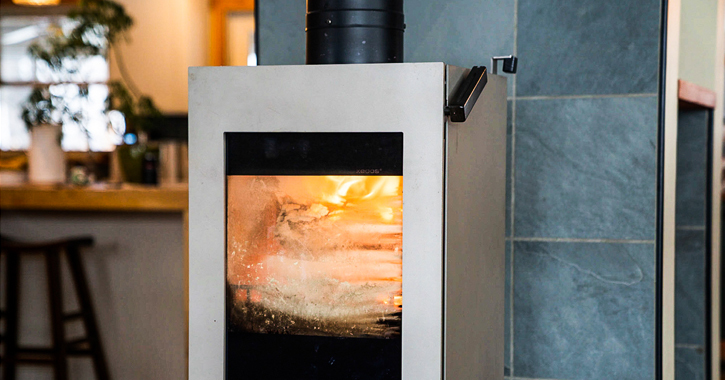How Does a Wood Stove Work?

Everybody loves the warmth and classic style of a wood-burning stove in the colder months. Woodstoves lend an instant cozy atmosphere to any space. If you’re considering investing in a woodstove this winter, you should first learn about the varieties of stove designs.
What Woodstoves Need to Work
Properly using a woodstove is about learning how to use your unique model efficiently. The key is maximizing heat output while using the least amount of firewood. Start by reading the owner’s manual for your stove model, if you have it. Many user manuals may also found online.
What Are the Different Types of Woodstoves?
There are two main types of woodstove: catalytic and noncatalytic.
- Catalytic:
Catalytic woodstoves use a honeycomb device made of certain metals to convert smoke into heat. This catalytic device ensures a longer, more even burn for your fire. However, the conversion process requires that the fire heat up to at least 500°F, which may require you to monitor your stove so that you can adjust your damper and expose the catalytic device at the correct point.
- Noncatalytic:
Noncatalytic woodstoves contain a metal box that sits between the flame and your flue and circulates fresh oxygen into your stove, essentially creating a second fire that recycles more of your soot than the primary fire could alone.
What Type of Woodstove Is Best?
Catalytic stoves require more maintenance but burn fuel more efficiently and for longer periods of time—up to 30 hours of steady heat, in some cases.
Noncatalytic stoves are easier to use and become hotter more quickly, but they consume fuel less efficiently: One load of wood may only provide heat for about seven to nine hours.
Whatever your preference, you can find EPA-certified stoves on the EPA Burn Wise website.
Fuel Tips for Woodstoves
Woodstoves work best when you achieve a hot, low-smoke fire. The key is seasoned wood, which is aged until it’s sufficiently dry (about six months). Avoid any treated or painted wood. Dry, aged wood gets hotter and produces less smoke than green or damp wood.
Overall, it’s important to reduce smoke that could produce creosote, a chemical residue that can build up in your flue or chimney and cause fires down the line. Choose newspaper as tinder rather than any kind of artificial logs to further reduce smoke.
How to Use a Woodstove
In general, when using a woodstove you should:
- Open the controls to allow air into the unit.
- Add crumpled newspaper and kindling to the firebox.
- Light the kindling and newspaper with a match or lighter.
- Add 2-3 small logs on top of the burning kindling.
- As the fire catches, close the door.
- After the initial logs have burned down to coals, keep the fire burning by adding additional, larger logs. Remember to keep the door closed except when adding logs to the fire.
- Once the fire is well established, reduce the air flowing into the firebox by closing the air valves one-third of the way.
- Repeat this process to keep the fire burning all night long.
Your new woodstove will come with an instruction manual—KEEP IT. Refer to your unit’s instruction manual for specific instructions.
Living with a Woodstove
Nothing beats the coziness of a wood-burning stove on a long winter night. If you love your woodstove but worry about your indoor air quality, Aire Serv® can help by testing your air quality and installing an air filtration system. To have your home tested and, if necessary, properly filtered of dangerous fine particles, request an appointment online or call (855) 259-2280 today.
Now that you’ve considered how woodstoves work, consider these tips for burning wood all winter long from our friends at Mr. Handyman. Like Aire Serv, Mr. Handyman is a part of the Neighborly® community of home services brands.
 Click to call
Click to call


